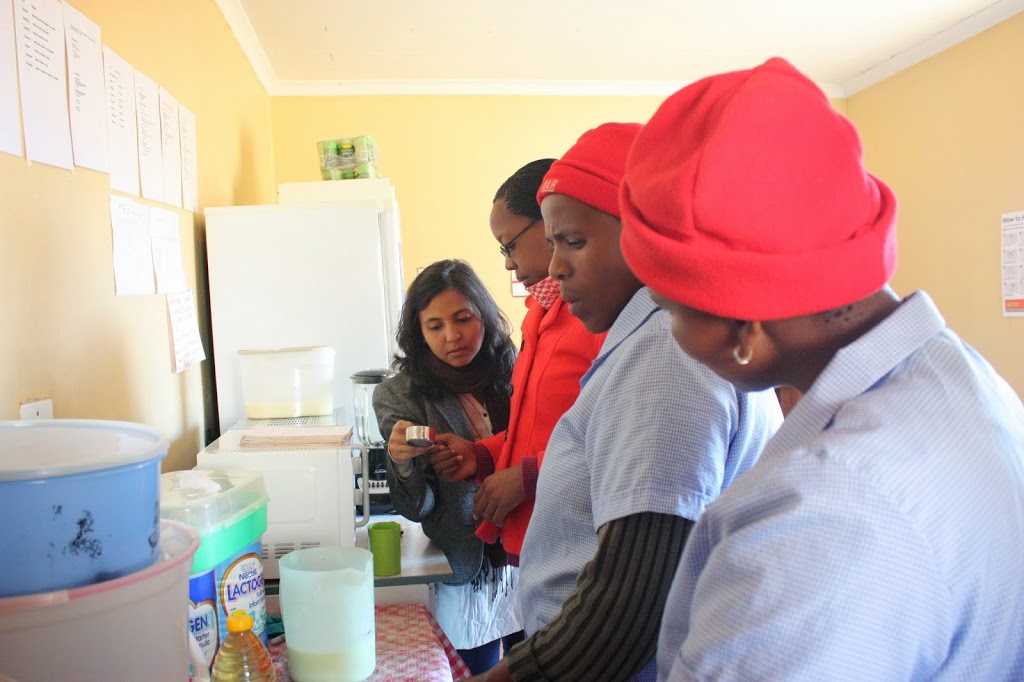 |
| Testing the feasibility to prepare F100 therapeutic milk at the Safe Home |
After haggling through a US student Visa, a South African transit Visa and a temporary work permit for Lesotho, I finally left for Mokhotlong from India late in May. Delayed to start at TTL on a time-bound UNICEF project, I had 10 weeks to enhance the quality of TTL’s 10 year old nutrition program by developing individualized child nutrition & development protocols.
 |
| Lunch time at the Safe Home |
In the first two weeks at TTL I examined the cycle of admission, management and graduation of TTL’s clients. This involved observing the use of anthropometric measures to assess nutritional status, an in-depth analysis of the nutritive value, variety and quality of the safe home diet, observation of caregiver counseling during outreach visits, and an assessment of the quality of monitoring and record-keeping.
To conduct these assessments, I relied on the latest WHO guidelines for management of Severe Acute Malnutrition (SAM), Lesotho Department of Agriculture’s ‘Lesotho Food Composition Table’ (a great compendium on indigenous foods and recipes), conversations with TTL fellows (past and current), interactions with the TTL staff during outreach visits, countless cups of coffee with Amarula, and, most importantly, play-time with about a dozen of the safe home kids!
- Up gradation of MUAC tapes and weighing scales to the latest global standards
- Develop a simple spreadsheet for detailed assessment during intake (illustrated below)
- Gauge TTL’s ability to convert assessment data into individualized nutrition, health and development plans
- Improve existing diet schedule to ensure daily provision of high-quality protein & micronutrients
- Introduce an ‘Appetite test’ to triage medically complicated SAM cases to the District Hospital
- Test the feasibility of preparing and providing timely doses of F-100 – a therapeutic, high-energy, high protein milk supplement
- Introduce an F-100 based diet for clients transitioning from the hospital to the Safe Home
And there’s going to be more! Next month, TTL will have a refresher training on how to develop and monitor individualized health, nutrition and development plans, how to chart and analyze weight gain, and last but not the least, how to manage food preparation, child feeding, and structured play time alongside record-keeping with minimal effort and time. With the gracious support of UNICEF, it is our hope that an individualized, well-rounded childcare plan would result in better and faster recovery of our clients from malnutrition and allow TTL to support many more vulnerable children.
 |
| Outreach team loading food parcels for household-level follow up visits |
Guest post by Gargi Wable, Nutrition Consultant for TTLF, who is finishing up work for a TTL grant from UNICEF.
The TTLF Fellow is a representative of the North American organisation The Tiny Lives Foundation. Based for one year in Mokhotlong, Lesotho, the TTLF Fellow serves in an administrative support capacity for the Basotho charity TTL.


0 Comments